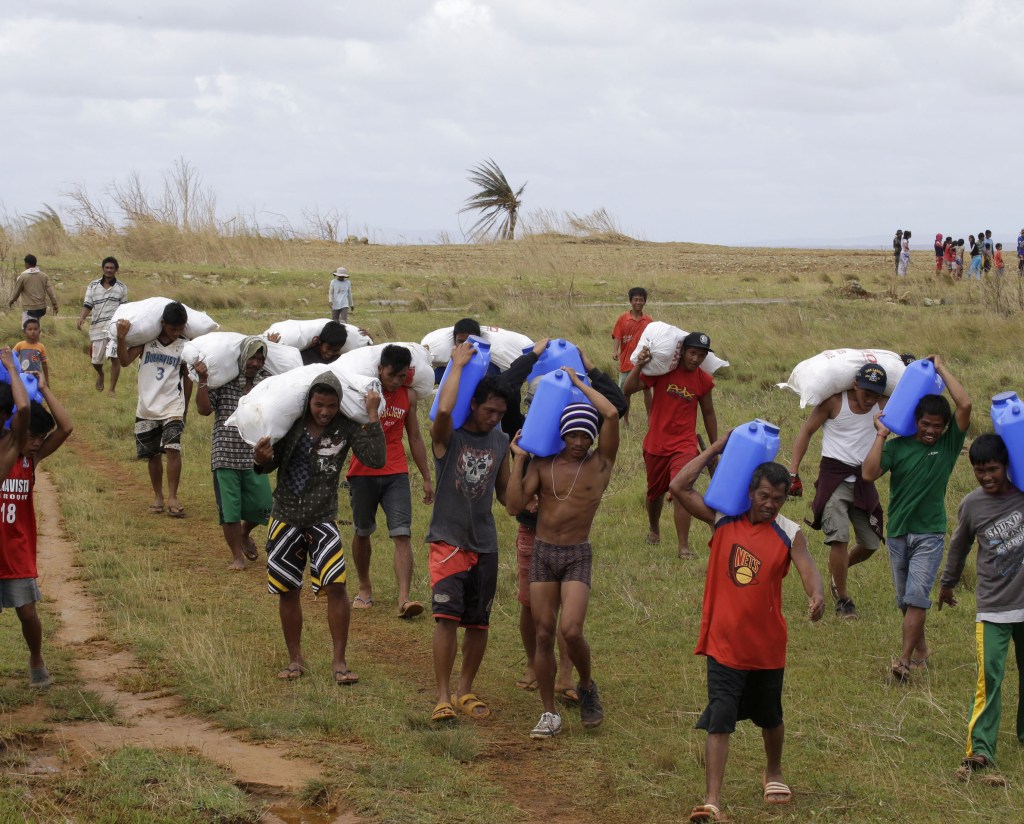TACLOBAN, Philippines — John Lajara peers under a slab of crumbled concrete, lifts a sodden white teddy bear then drops it back into the filth. He reaches again into the rubble and pulls out a boot, a treasured find in this typhoon-flattened village. But he’s searching for something far more precious – the body of his brother, Winston.
For those still looking for loved ones missing since last week’s storm, their already torn-apart lives are shot through with a difficult question – How do you move on when there is no body to bury?
The search for the missing – 1,179 by official count – has become a hellish daily activity for some. In Lajara’s seaside village, residents estimate that about 50 of the 400 people who lived there were killed. About half of the dead are still missing: mothers, fathers, children and friends.
“Somehow, part of me is gone,” Lajara said as another fruitless expedition in the rubble ended Saturday.
Lajara has carried out the routine since both he and his brother were swept from their house by Typhoon Haiyan on Nov. 8. And every day has ended so far with no answers on Winston’s fate.
According to the latest figures by the Philippines’ main disaster agency, 3,633 people died and 12,487 were injured. Many of the bodies remain tangled in piles of debris, or are lining the road in body bags that seep fetid liquid. Some are believed to have been swept out to sea.
After the initial days of chaos, when no aid reached the more than 600,000 people rendered homeless, an international aid effort was gathering steam.
“We’re starting to see the turning of the corner,” said John Ging, a top U.N. humanitarian official in New York. He said 107,500 people have received food assistance so far and 11 foreign and 22 domestic medical teams are in operation.
U.S. Navy helicopters flew sorties from the aircraft carrier USS George Washington off the coast, dropping water and food to isolated communities. The U.S. military said it will send about 1,000 more troops along with additional ships and aircraft to join the aid effort.
So far, the U.S. military has moved 190 tons of supplies and flown nearly 200 sorties.
The focus of the aid effort is on providing life-saving aid for those who survived, while the search for missing people is lower in the government’s priorities.
The head of the country’s disaster management agency, Eduardo del Rosario, said the coast guard, the navy and civilian volunteers are searching the sea for the dead and the missing.
Still, he said, the most urgent need is “ensuring that nobody starves and that food and water are delivered to them.”
Lajara’s neighbor, Neil Engracial, cannot find his mother or nephew, but he has found many other bodies. He points at a bloated corpse lying face down in the muddy debris. “Dante Cababa – he’s my best friend,” Engracial says. He points to another corpse rotting in the sun. “My cousin, Charana.” She was a student, just 22.
Lajara remembers the moment his brother vanished.
They were standing alongside each other side by side with relatives and friends before the surge hit. They stared at the rising sea, then turned to survey the neighborhood behind them, trying to figure out where or if they could run. Then the wave rushed in.
Lajara, Winston and the others dived into the water, and were swept away from each other. After Lajara’s face hit the water, he never saw Winston again.
Lajara has trudged through the corpse-strewn piles of rubble and mud, searching for two things: wood to rebuild his home, and Winston. So far he has found only wood.
Send questions/comments to the editors.



Success. Please wait for the page to reload. If the page does not reload within 5 seconds, please refresh the page.
Enter your email and password to access comments.
Hi, to comment on stories you must . This profile is in addition to your subscription and website login.
Already have a commenting profile? .
Invalid username/password.
Please check your email to confirm and complete your registration.
Only subscribers are eligible to post comments. Please subscribe or login first for digital access. Here’s why.
Use the form below to reset your password. When you've submitted your account email, we will send an email with a reset code.